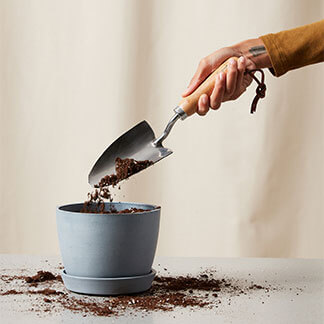Lack of Sunlight
One reason your butterfly plant’s leaves are fading could be because it is not receiving enough sunlight. The green portions of the leaf contain chlorophyll, which does the bulk of the work in creating food for the plant. When a butterfly plant is not receiving enough sunlight, the purple stripes on its leaves may change to green as a way for the plant to maximize the amount of food it is creating. If you notice color fading, try moving your butterfly plant closer to natural indirect light to improve its ability to photosynthesize effectively. You can also consider adding a grow light.
Too Much Sunlight
Too much sunlight causes stress on plant leaves and can dehydrate a plant. If your butterfly plant is sitting in direct sunlight, it might dry out and physically become scorched from the sunlight. This dehydration can cause the color of a plant’s leaves to change and fade in color and appear washed out or bleached. Try moving the plant out of direct sunlight to indirect bright light and away from drafts.
Underwatered
When a plant is underwatered, it will become dehydrated, often lose vibrancy, and begin to fade in color. To avoid the leaves of your butterfly plant fading, you should consistently water when 50% of the soil volume is dry. Always make sure to feel the soil with your fingers between waterings to tell best when it needs more hydration. Try not to get the leaves of the butterfly plant wet during watering to avoid mildew.
Lack of Nutrients
Sometimes houseplants need to be fed additional nutrients that they might no longer be getting from their potting soil. When a plant leaf’s color is fading due to a nutrient deficiency, it is most commonly due to a lack of nitrogen. You can offer it some fertilizer to give it the boost it needs. Fertilize once a month during the growing season with an all-purpose fertilizer. Always follow the label instructions on your fertilizer.










